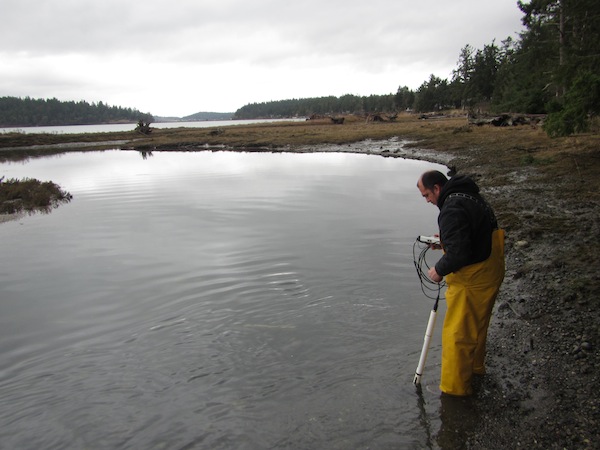
Regulated Waters of the Swinomish Indian Reservation support the production, preservation, and enhancement of fish, shellfish, and other aquatic resources. Natural fish and shellfish populations and the aquatic resources upon which they depend for survival are highly vulnerable to damage from degraded water quality and decreased water quantity.The Swinomish people are a fishing people and depend on fish and shellfish resources and other species dependent on water quality for subsistence, income, ceremonial, and cultural purposes and therefore for their ultimate survival. Surface waters are also in hydraulic continuity with groundwater aquifers within the boundaries of the Swinomish Indian Reservation.
The Department of Environmental Protection is committed to environmental protection, restoration, and enhancement in order to protect human health and welfare and the environment. Water quality monitoring is part of the integrated, Reservation-wide environmental protection effort. Ongoing water quality monitoring also facilitates environmentally sound resource management and planning.
The purposes of the ambient water quality monitoring (AWQM) program are:
- to establish baseline water quality data and characterize the waters of the Swinomish Indian Reservation;
- identify water bodies which fail to meet proposed water quality standards;
- develop and implement EPA approved water quality standards; and,
- assess the effectiveness of existing regulations in protecting water resources.
Ambient water quality monitoring includes regular monitoring for conventional parameters in marine water bodies and freshwater bodies, bio-assessments in streams, and annual nearshore surveys.
All stations are chosen at accessible sites at or near watershed boundaries and in sensitive/vulnerable use areas (or subdivisions of a waterbody). The stations monitored each year and the rationale for selecting those stations is detailed in our annual Monitoring Strategy after a review of our annual Tribal Assessment Report. Temperature, dissolved oxygen, conductivity, salinity, pH, turbidity and fecal coliform bacteria are monitored at each ambient station.
In addition to ambient water quality monitoring, bioassessments are conducted annually during late summer on each perennial stream along an approximately 100 meter long reach. These assessments include macroinvertebrate sampling. More intense stream bioassessments including geomorphologic, hydrologic, and habitat element characterizations will be conducted every 5-10 years.
Adopted Water Quality Standards are listed in the Tribal Code, Chapter 19-06.
- Per Chapter 19-06, Table 15, Footnote O: freshwater copper criteria have not yet been adopted. Once adopted, the Biotic Ligand Model input parameters used in developing the criteria will be listed here.
____________________________________________________________
-
Bioaccumulate Toxics in Native American Shellfish Project, 2002-2006